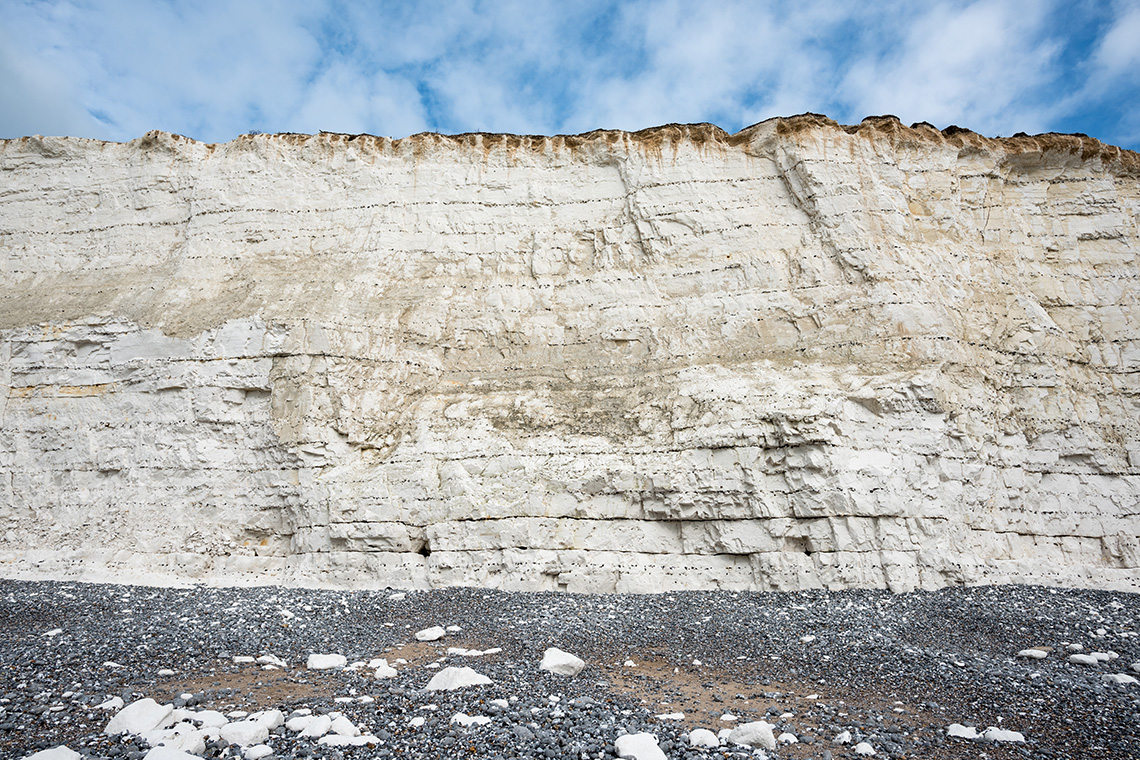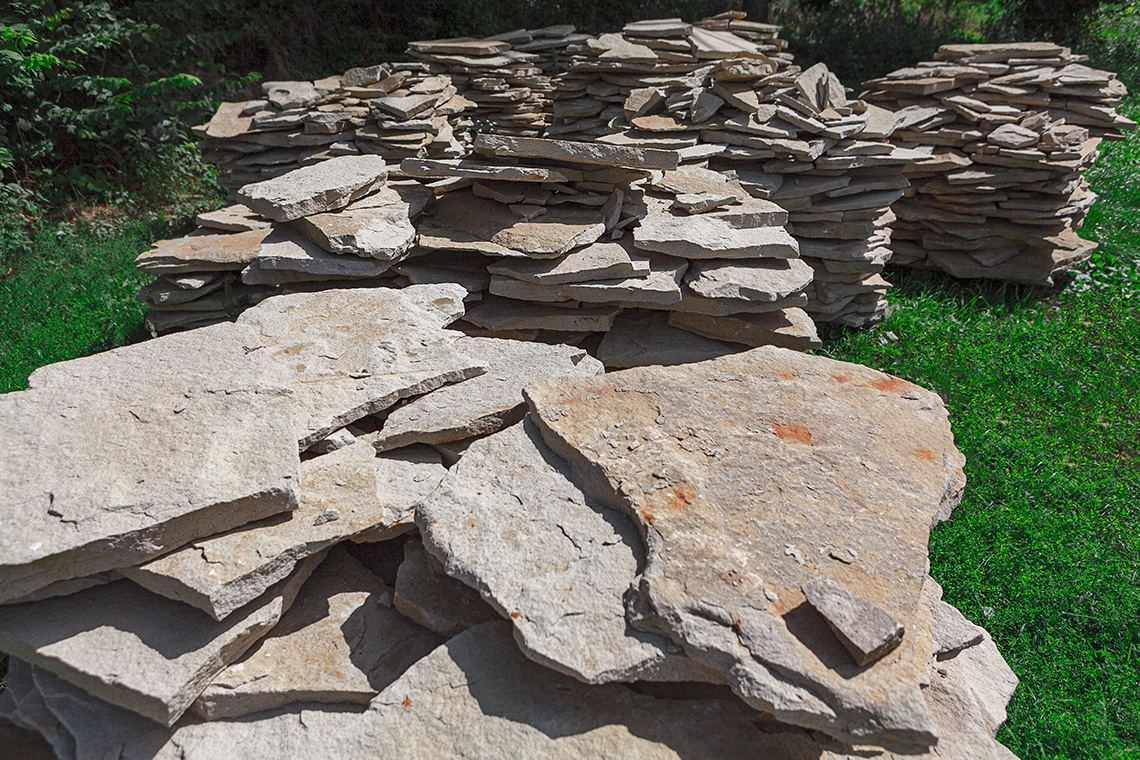Minds On
Rocks and minerals
Examine the following pair of photos. How does the scene in the first image become what you observe in the second image? Record your thoughts using a method of your choice.
Explore the following carousel of images and consider the same question: how might the scene in the first image have become what can be observed in the second image? Record your thinking using a method of your choice.
Pause and Reflect
Pause and reflect
Rocks and minerals play an important role in daily life. Take a moment and think about how these natural resources get from where they are found to where we see them every day.
Make a flow chart of the possible journey of a rock or mineral of your choice, starting from where it originates in nature and ending where the rock or mineral is used by humans in daily life. Record your ideas on paper, digitally, or orally. You may wish to include pictures or diagrams.
Before you begin, explore the following example of a map of how limestone travels from the quarry where it occurs in nature all the way to its final use by humans:

This illustration demonstrates the journey of rocks and minerals from their natural place of origin to where they are used by humans in daily life. In the top left corner, there is a limestone quarry. A directional arrow to the right points to the next image of a stick of dynamite, captioned as "Blasted into small pieces". From the second image, there are directional arrows to the right pointing to an image of the back of a transport truck being loaded with the broken bits of limestone. Directional arrows point to the next image underneath, where a truck of limestone slabs is driving on a road. The final image in this sequence is a pile of limestone slabs stacked on top of a pallet in an industrial yard, where they will be used by humans.
Action
Rock and mineral extraction
In the Minds On activity, we thought about possible routes rocks and minerals take from where they occur in nature to the situations in which they are used by humans in daily life. Before we begin to explore how humans access rocks and minerals, it is important to note that you will be using aspects of the Scientific Research Process throughout your exploration.
Check out this video to learn about the steps of the Scientific Research Process.
Let’s begin our research by investigating about what is known as “aggregate extraction” as it occurs along the Niagara Escarpment in Southern Ontario. But first, some new vocabulary!
Press the following tabs to learn the definitions of each new term:
The Niagara Escarpment is a unique ecosystem in Southern Ontario. It is a huge band of rock cliffs created over millions of years by wind and water erosion, providing a corridor for nature. Check out the following map to see where the escarpment is located.

This is a map of southern Ontario that pictures Lake Huron to the top left, Georgian Bay along the top-centre, and Lake Ontario in the lower right corner of the image. In the centre of the image is a highlighted strip of land that stretches from the bottom left corner of Lake Ontario up to a peninsula tip to the bottom left of Georgian Bay and mid-right side of Lake Huron. This highlighted strip of land is labelled "Niagara Escarpment".
Access this video to learn more about the Niagara Escarpment.
The Niagara Escarpment is protected by an environmental plan that will allow farming, but try to minimize the impact of aggregate and urban development. With so much emphasis on protecting the environment, why allow mining on the escarpment at all?
Pause and Reflect
Pause and reflect
What are some possible reasons to allow surface or open pit mining? Record your answers on paper, digitally, or orally.
Check out this video clip to explore other thoughts around aggregate extraction.
Examine the following video clip to find out how sand and gravel are removed. As you observe the clip, answer the following question on paper, digitally, or as an audio-recording:
- What are the negative impacts of building a pit or quarry?
Press ‘Negative Impacts’ to access possible answers to the previous question.
The negative impacts of building a pit or quarry on the ecosystem include the disruption of the natural wildlife corridor, ground water, and possibly leaving streams and wells dry. Noise and dust pollution are another product of pits and quarries. Think about the large machines, blasting, and finally, moving of the sand and gravel to where it will be used – more trucking and use of fossil fuels.
Rehabilitation
Rehabilitation for the environment is the process of returning the land to some degree of its original state. Not only is the Niagara Escarpment protected, but all of Ontario has laws and regulations that require mining companies to rehabilitate all of its pits, quarries, and mines.
The companies that own pits and quarries have been working hard to redevelop them. One example is a pit created on farmland. Before mining, the company carefully removed the top soil and then sub-soil, keeping them separate. When the pit was retired, the soils were replaced, and the pit became a vineyard.
Check out this video to examine how one pit was rehabilitated into a natural area. Make note of the steps they followed! You may wish to record your thoughts on paper, digitally, as an audio recording, or in another method of your choice.
Rehabilitation is an ongoing process. The trees planted on the pit floor didn’t grow very well, as the soils were compacted and did not have the nutrients they needed. With more research, even the newly formed water areas can support a variety of species.
Consolidation
Balancing the positive and negative impacts of mining

Take a moment to organize your thoughts around the positive and negative impacts of the extraction and refining of resources.
Create a poster, a t-chart, or an audio/video recording comparing the advantages and disadvantages of the different impacts of mining. Highlight two to three impacts, and be sure to include why you believe each one is positive or negative.
Use the following interactive checklist to guide your work:
Positive and negative impacts of mining
When preparing my response, did I…
Reflection
As you read through these descriptions, which sentence best describes how you are feeling about your understanding of this learning activity? Press the button that is beside this sentence.
I feel…
Now, record your ideas using a voice recorder, speech-to-text, or writing tool.



